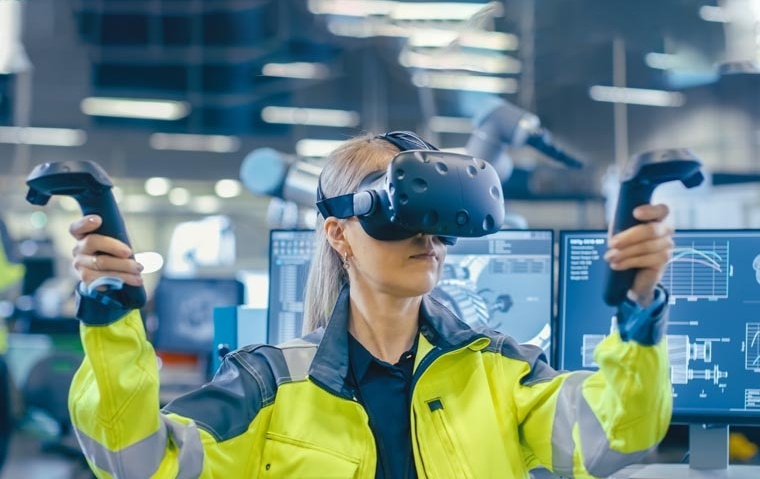Does VR for learning really work?

We may look back on 2017 as the year Virtual reality (VR) took a major leap towards becoming part of our everyday lives.
In the entertainment sector, new VR headsets and platforms were unveiled, with the quantity and quality of VR games and VR experiences increasing significantly. Retailers and consumer brands are embracing VR like never before to attract and engage customers. Even local government is getting in on the act, using VR to address key challenges.
In the world of workplace learning, VR also made big strides with the launch of mobile VR for learning. This breakthrough innovation brings a passive 360° experience to life by enabling learners to interact with a virtual environment. It gives them the autonomy to explore and control the environment, which is crucial for learning, whilst being fully SCORM compliant.
However, discussions on the use of VR for workplace learning tend to come back to a core question:
Where’s the proof that it works?
One of the reasons stated by organisations for their reluctance to use emerging technologies like VR is the lack of empirical evidence to back it up. This goes with the territory of anything innovative or new: it takes times to build up a body of evidence to show that it’s as effective as or can achieve better results than tried and tested methods.
Over time, we believe the early adopters of VR for learning will provide increasingly persuasive evidence of real life success to add to those already out there. In the meantime, it’s down to us, as learning professionals, to explore how innovation can be utilised to create the best learning experiences possible.
And we’ve done just that, with a new pilot study comparing mobile VR learning with two other popular methods.
VR research study
We knew from our own practical experience of working with VR that it offers great potential and opportunities for learning. Existing studies were already beginning to indicate the effectiveness of VR training for specific workplace scenarios that pose a significant risk and require practice[1]. However, there was a lack of evidence focusing on modern head-mounted VR interventions to understand whether VR training can live up to its hype.
We realised the only way to answer the question about the effectiveness of VR for workplace learning was to start exploring and experimenting.
Therefore, our first step into evaluating the effectiveness of VR for workplace learning began with an explorative pilot study. The aim was to compare a VR training experience about compliance rules for street fundraisers to an online PDF and a gamified elearning interaction, delivering the same compliance content. We measured learner reaction, knowledge acquisition, knowledge retention and confidence among our group of volunteer participants.
Which learning method would be most effective?
Research results
The results of our explorative study revealed that participants found VR significantly more enjoyable, significantly easier to concentrate on and found it provided greater learning satisfaction than other learning interventions.
In terms of confidence to apply, VR yielded high confidence ratings that were comparable to the other learning interventions.
In addition, the results show that mobile VR is at least as effective for learning, in terms of knowledge acquisition and retention, as the more conventional learning methods, and early indicators suggest it may even be more effective. With an average score of 9.45 out of 10 for knowledge acquisition and 9 out of 10 for knowledge retention, the VR intervention successfully taught observational skills and decision-making.
You can see all the full results by downloading the research paper. Alternatively, for a quick visual summary of the results, use this infographic.
Further exploration
As exciting as our findings are, we’ve only scratched the surface of VR’s potential for learning. What’s clear is that there is sufficient evidence to warrant a deeper investigation.
We’re now planning to explore the effectiveness of mobile VR further with a wider study involving a larger pool of participants. We’d particularly like to explore how VR training affects workplace performance for real employees.
Find out more about mobile VR learning or volunteer your organisation for our next VR study.
1. Boud, A.C., Haniff, D.J., Baber, C. and Steiner, S.J., 1999. Virtual reality and augmented reality as a training tool for assembly tasks. In Information Visualization.